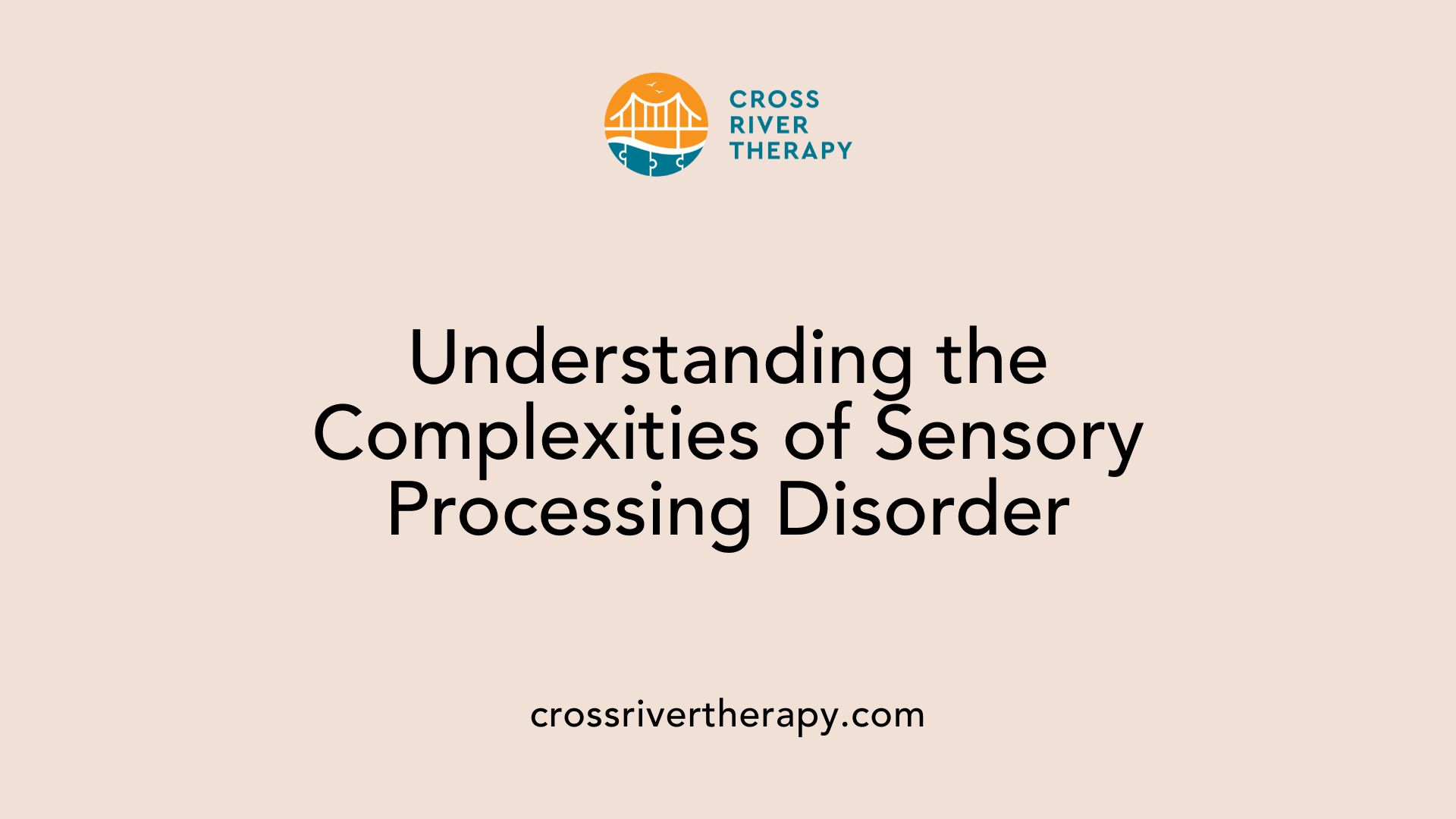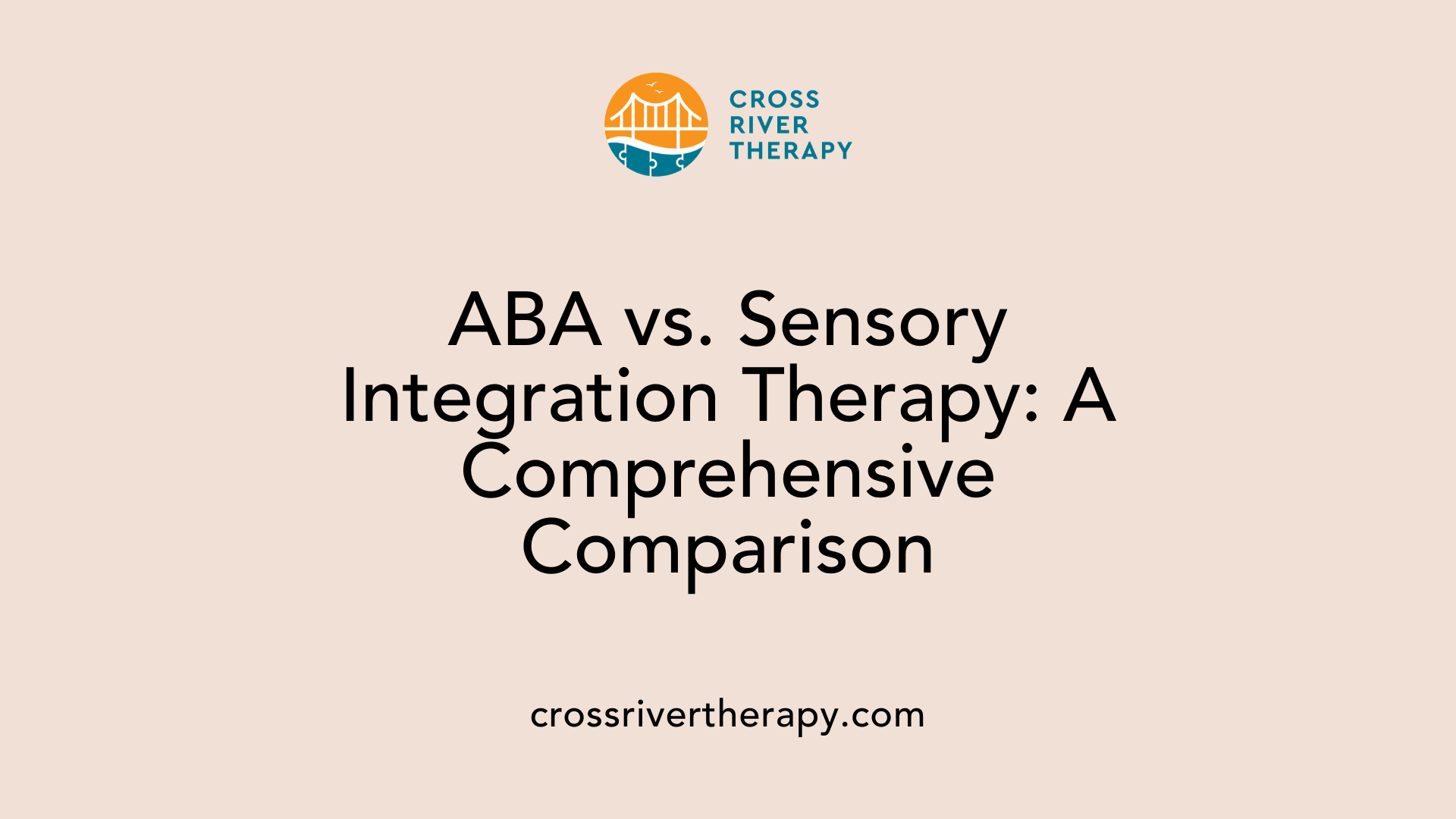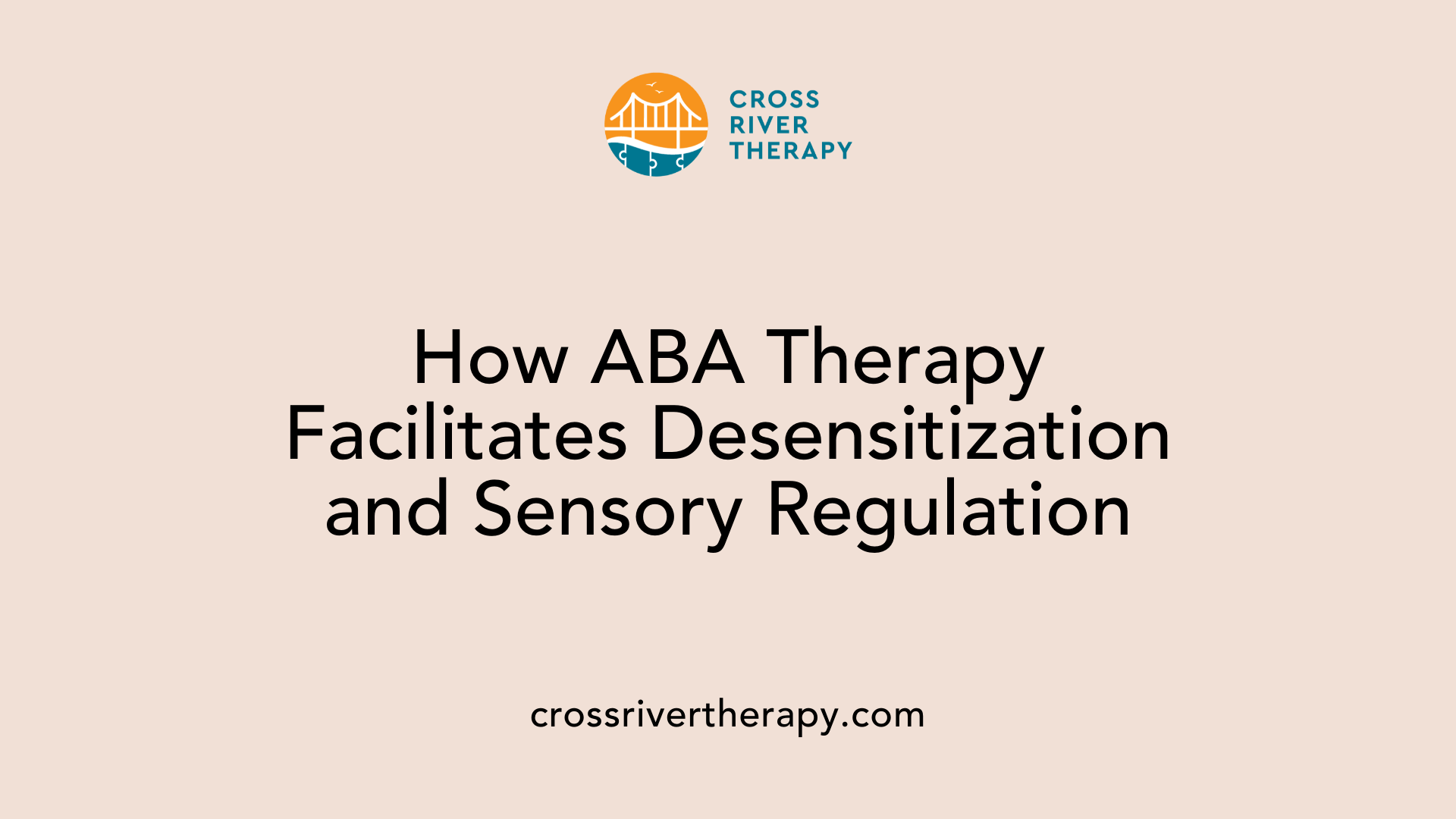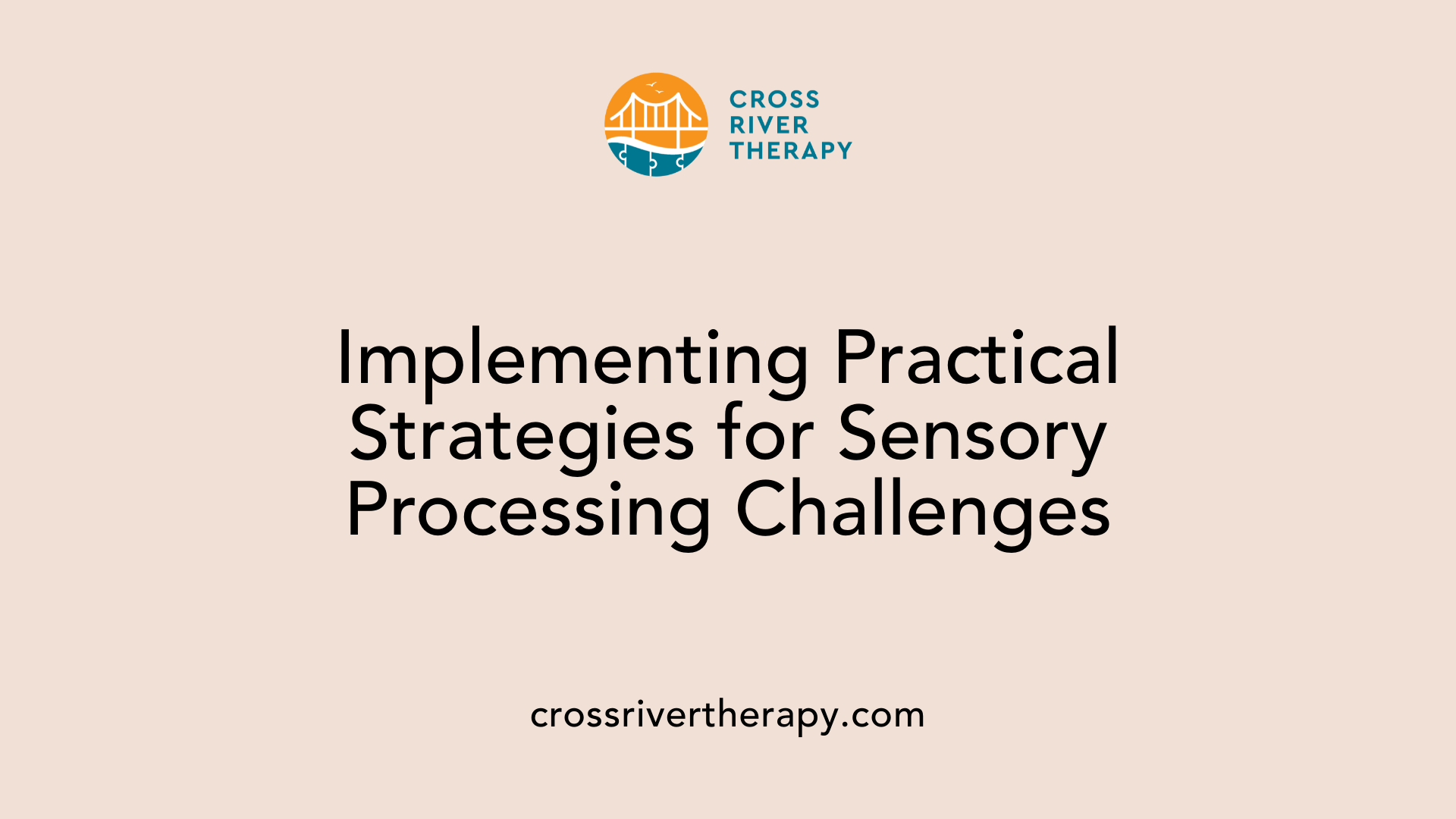How ABA Therapy Helps with Sensory Processing Issues in Children
Unlocking the Power of ABA Therapy for Sensory Challenges in Children
Understanding Sensory Processing and ABA Therapy
Sensory processing issues can present significant challenges for children, particularly those with autism, affecting their ability to function effectively in daily life. While Sensory Processing Disorder (SPD) is not officially recognized in the DSM-V, its prevalence and impact on children with other conditions are undeniable. Among the various therapeutic options, Applied Behavior Analysis (ABA) therapy stands out for its structured approach to addressing these sensory challenges. This article explores how ABA therapy is used to enhance sensory processing abilities, improve emotional regulation, and support better social outcomes for children.
Demystifying Sensory Processing Disorder

Characteristics of Sensory Processing Disorder
Sensory Processing Disorder (SPD) affects how the brain interprets and responds to sensory information. Children with SPD may be hypersensitive, reacting strongly to sensory stimuli like loud noises or bright lights. Conversely, they can also exhibit hyposensitivity, showing little to no response to sensory inputs.
These variances in sensory perception can lead to challenges in daily activities and behavior. Children may struggle with social interactions, experience anxiety, or act out due to overwhelming sensations, making it crucial to understand their needs and develop effective coping strategies.
Prevalence and Challenges
SPD is estimated to affect a significant portion of children, especially those with other disorders — between 40-88% of those diagnosed with conditions like autism spectrum disorder also exhibit sensory processing difficulties. Despite its prevalence, SPD is not yet officially recognized in the DSM-V, complicating diagnosis and treatment access through insurance and healthcare systems.
Link to Autism and Other Conditions
In the context of autism, sensory issues are highlighted as vital aspects of the disorder. Autistic individuals often experience pronounced sensory sensitivities, leading to difficulties in navigating their environments. ABA therapy, a primary intervention, employs strategies such as desensitization and reinforcement techniques to address sensory challenges effectively.
Understanding these connections can enhance therapeutic approaches like sensory integration therapy, where activities provide tailored sensory input to help children adapt and regulate their responses more effectively.
Structured Support: How ABA Therapy Addresses Sensory Needs

ABA's Approach to Sensory Processing
Applied Behavior Analysis (ABA) provides a structured framework for addressing the sensory needs of children, particularly those with Sensory Processing Disorder (SPD) or autism. By assessing each child's unique triggers and responses to various stimuli, ABA therapists can create individualized interventions that help manage and modify sensory-related behaviors. These interventions often incorporate sensory integration techniques, promoting a better understanding of sensory experiences and enhancing engagement in learning.
Role of Reinforcement in ABA
Reinforcement is a cornerstone of ABA therapy, especially in handling sensory challenges. Techniques like positive reinforcement encourage children to adopt coping strategies, while differential reinforcement promotes alternative behaviors rather than problematic ones. For instance, when a child uses deep breathing techniques during a moment of sensory overload, they may receive praise, thereby reinforcing this positive behavior.
Customized ABA Strategies for Sensory Issues
To address sensory processing issues effectively, ABA employs a variety of tailored strategies. Here are some key methods:
| Strategy | Description | Purpose | |----------------------------------|---------------------------------------------------------------------------|------------------------------------------------| | Desensitization | Gradually exposing a child to sensory stimuli to build tolerance.| | Helps manage hypersensitivity | | Sensory Diet | Tailored sensory activities, like swinging or brushing, enhance regulation. | Promotes sensory balance | | Environmental Modifications | Creating sensory-friendly spaces that minimize triggers. | Provides comfort in learning environments | | Self-Regulation Techniques | Using mindfulness and deep breathing to help children manage their responses to sensory input. | Supports emotional regulation |
Employing these strategies not only aids in developing coping mechanisms but also fosters a positive approach to sensory experiences, ultimately enhancing children's quality of life and social engagement.
What is an example of a sensory function in ABA therapy?
An example of a sensory function in ABA therapy includes self-stimulatory behaviors that provide sensory pleasure or relief from discomfort, such as hand flapping or running hands under water. These behaviors are automatically reinforcing, meaning they satisfy an intrinsic desire for sensory stimulation without needing external rewards. Other examples can include bouncing a leg while sitting or rocking back and forth. Understanding these sensory behaviors is crucial in developing effective treatment plans, especially for children with autism, as they often engage in such actions to enhance their sensory experience or escape unpleasant sensations. Interventions may include sensory extinction or response blocking to reduce the occurrence of these behaviors while ensuring the individual's sensory needs are considered.
Comparison of ABA and Sensory Integration Therapy

How do Sensory Integration Therapy and ABA therapy compare for addressing sensory processing challenges?
Sensory Integration Therapy (SIT) and Applied Behavior Analysis (ABA) therapy provide distinct but complementary approaches to managing sensory processing challenges in children.
Sensory Integration Therapy (SIT) focuses on physical activities that help children better process sensory input. This therapy involves engaging children in activities that stimulate their senses, enhancing their ability to cope effectively with sensory stimuli in their daily lives. The approach is more experiential, encouraging children to interact with various sensory experiences in a controlled environment.
Applied Behavior Analysis (ABA), on the other hand, emphasizes behavior modification techniques. It systematically uses reinforcement strategies to promote positive behaviors and reduce negative or maladaptive responses to sensory experiences. Through structured interventions, ABA helps children learn specific coping strategies to manage sensory overload and engage more positively in their environments.
Benefits of integrating both therapies
Integrating ABA and SIT can create a comprehensive therapeutic framework by harnessing the strengths of both approaches.
| Therapy Type | Focus Area | Key Benefits |
|---|---|---|
| Sensory Integration | Sensory processing skills | Enhancing sensory coping abilities |
| Applied Behavior Analysis | Behavioral modification | Reducing maladaptive behaviors |
Combining these therapies may lead to improved emotional regulation, better engagement in activities, and a greater overall quality of life.
Tailoring therapy to individual needs
It’s essential to tailor interventions according to the unique sensory sensitivities of each child, such as hypersensitivity or hyposensitivity.
- Both therapies can be personalized based on the child's sensory preferences, chosen triggers, and goals, ensuring a more effective approach to coping with sensory challenges.
- Collaboration among therapists and caregivers can also enhance consistency and support, creating sensory-friendly environments that further aid a child's developmental journey.
Through a careful balance of sensory integration techniques and behavior analysis, children can effectively manage their sensory processing challenges.
ABA's Role in Desensitization and Sensory Regulation

How can ABA therapy be used to help children with sensory processing challenges manage overload and emotional regulation?
ABA therapy can be effectively integrated with sensory calming activities to help children with sensory processing challenges manage overload and improve emotional regulation. Customized interventions can include structured physical activities, such as going for walks or using fidgets, which promote physical engagement alongside deep breathing exercises for enhanced calmness and self-regulation.
Gradual Desensitization Techniques
A crucial strategy in ABA is gradual desensitization. This involves slowly increasing a child's exposure to sensory stimuli that typically provoke discomfort. For instance, a child with noise sensitivity might begin by listening to soft music and incrementally increase the volume over time, helping them adjust their tolerance to louder sounds in a controlled manner.
Role of Sensory-Friendly Environments
Creating sensory-friendly environments is another vital component of ABA therapy. Sensory rooms equipped with calming tools, such as lighted bubble towers and vibroacoustic water beds, provide tailored experiences designed to either soothe or invigorate the child based on their individual needs. These environments minimize overwhelming stimuli, making it easier for children to engage and learn effectively.
Improvement in Emotional Regulation through ABA
By combining ABA principles with sensory integration strategies, children can learn crucial coping mechanisms and adaptive responses. This approach not only enhances their ability to handle overwhelming situations but also fosters better emotional regulation in daily interactions, whether at home or in school settings.
Enhancing School Readiness through ABA
ABA strategies for academic success
Applied Behavior Analysis (ABA) plays a crucial role in preparing children for school by implementing structured interventions tailored to individual needs. Through functional behavior assessments, ABA therapists identify specific triggers and sensory processing challenges, allowing them to design customized plans that include sensory integration techniques, sensory breaks, and supportive learning environments.
Improving attention and memory
ABA enhances academic outcomes by fostering essential skills such as attention and memory. Techniques like positive reinforcement help children develop better focus and retention abilities, making it easier for them to engage in learning activities. Additionally, structured sensory-seeking and self-regulation strategies empower children to manage their own sensory experiences.
Reducing adverse behaviors
By addressing sensory processing issues, ABA reduces problematic behaviors that often hinder social interactions and learning. Strategies like gradual desensitization and environmental modifications create a supportive atmosphere, which is vital for alleviating stressors in classroom settings. Overall, the integration of ABA not only aids in sensory regulation but also improves children’s readiness for academic challenges.
Collaborative Approaches in ABA and Sensory Processing
Role of caregivers in reinforcing ABA strategies
Caregivers play a vital role in reinforcing Applied Behavior Analysis (ABA) strategies designed to address sensory processing issues. Their involvement is crucial in understanding their child's specific sensory sensitivities and preferences, which allows them to help implement effective strategies at home.
Importance of consistent environments
Establishing a consistent sensory-supportive environment at home and school helps children with sensory processing challenges. By creating similar routines and practices, caregivers can help minimize sensory overload and promote a sense of security, which is essential for effective learning and development.
Engagement beyond therapy sessions
Engaging caregivers in the therapeutic process ensures that strategies introduced during ABA sessions are practiced consistently in their daily lives. This collaboration helps enhance the effectiveness of ABA therapy, allowing children to further benefit from skills learned during therapy, thereby improving their emotional regulation and overall quality of life.
Practical Solutions for Sensory Processing Challenges in Autism

What are effective accommodations for autistic children with sensory issues?
Effective accommodations for autistic children with sensory issues involve a variety of strategies to support their unique sensory processing needs. For children with hypersensitivity, using light covers or ear plugs, and providing comfortable clothing can help reduce overwhelming stimuli. These modifications can minimize discomfort and aid concentration.
In contrast, those with hyposensitivity may benefit from fidget toys and opportunities for movement to seek out sensory input. This can help them self-regulate and regain focus when needed.
Creating a structured environment, such as minimizing noise and visual distractions in classrooms, is essential to help maintain a modulated state for better focus and learning. A sensory-friendly space can significantly ameliorate issues related to sensory overload, improving the child's overall learning experience.
Developing coping strategies
Developing coping strategies is crucial for children navigating sensory processing challenges. Techniques such as deep breathing, mindfulness, and sensory breaks can be integrated into daily routines. By consistently utilizing these methods, children learn to manage their responses to sensory inputs effectively.
Additionally, individualized approaches that include desensitization and sensory diets tailored to a child's specific needs can provide structured support.
Effectiveness of sensory-friendly environments
Creating a sensory-friendly environment at home and school can significantly reduce sensory overload and promote comfort for children with sensory processing challenges. Modifications might include using noise-canceling headphones, adjusting lighting, or providing sensory tools. Such environments foster regulation and enhance participation in daily activities, ultimately leading to better emotional and academic outcomes.
ABA Therapy's Holistic Benefits
Impact on Social Engagement
ABA therapy plays a significant role in enhancing social skills among children with sensory processing difficulties. By employing structured interventions, therapists can help children learn how to engage appropriately with peers, fostering better communication and interaction. This approach not only aids in building friendships but also encourages participation in group activities, which are crucial for social development.
Reducing Problematic Behaviors
One of the central goals of ABA therapy is to minimize challenging behaviors associated with sensory processing disorders. Through techniques like positive reinforcement and gradual desensitization, children can learn to manage their responses to sensory stimuli. This responsive approach leads to fewer incidents of meltdowns or disruptive behaviors, allowing for a calmer and more productive environment at home and school.
Overall Quality of Life Improvements
The comprehensive nature of ABA therapy significantly enhances the overall quality of life for children faced with sensory challenges. By teaching coping strategies, self-regulation techniques, and creating sensory-friendly environments, children are better equipped to handle daily activities and transitions. This not only improves academic readiness but also heightens emotional well-being, leading to happier, more engaged children in their everyday lives.
Utilizing ABA Therapy for Comprehensive Support
ABA therapy offers a comprehensive and strategic approach to managing sensory processing issues in children, equipping them with the skills necessary to navigate their environments smoothly. By focusing on individualized strategies and consistent support, ABA therapy not only supports sensory needs but also prepares children for success in social and academic settings. The collaboration between therapists, caregivers, and educators is essential in fostering an environment that enables children to thrive regardless of their sensory processing challenges. As understanding and techniques continue to evolve, ABA therapy remains a robust choice for enhancing the lives of children with sensory processing issues.
References
- All You Need to Know About ABA and Sensory Integration Therapy
- Can ABA be used for SPD? - Special Learning
- ABA and School Readiness for Children with Sensory Processing ...
- Exploring the Importance of Sensory Integration in ABA Therapy
- Sensory Issues - Autism Speaks
- Sensory Processing: A Key Aspect of ABA Therapy
- Can ABA Therapy Help with Sensory Issues? - Level Ahead ABA
- Sensory Issues - Autism Speaks
- Sensory processing disorder (SPD) - Autism Speaks
- Supporting sensory needs at school | Autism Speaks



